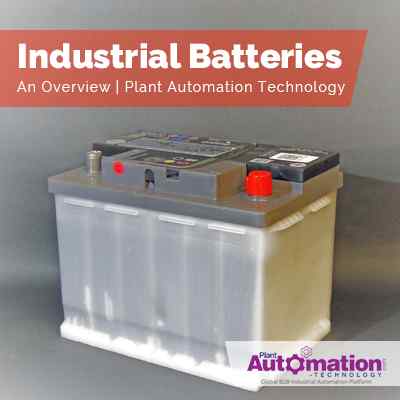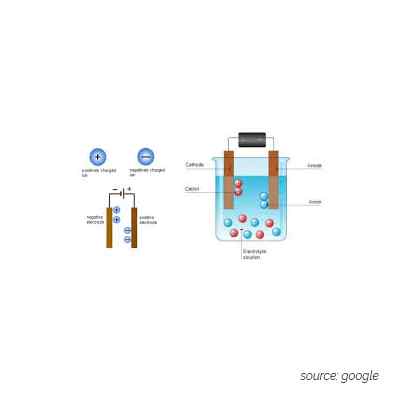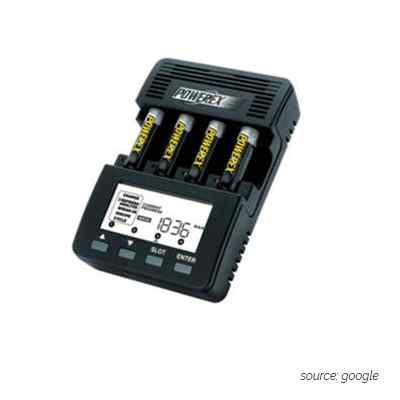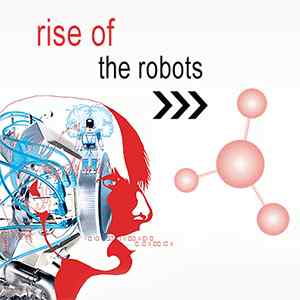Industrial Batteries: An Overview | Plant Automation Technology

What are industrial batteries?
Industrial batteries are electrochemical devices that convert higher-level active materials into an alternate state during discharge. Generally, they convert chemical energy into electricity.
To manufacture these industrial batteries, metals and chemicals are used, that are chosen based on the properties such as crystal size, shape, porosity, doping, and surface modification. The performance of the battery is measured based on power density, stability, energy, and safety measures. On the whole, industrial batteries varies in sizes, shapes to fit a wide range of applications.
Click here to find Industrial Batteries Manufacturers By Country
Best Buying Guide for Industrial Batteries
According to the market research reports, it is predicted that there will be an upsurge in the growth of industrial batteries market due to surging electrification. Rising electric energy demands are anticipated to be the important driver of the global industrial batteries market. These batteries are used extensively in performing automation, construction machinery, robotics, and small transport vehicles which require batteries.
| Also Read: Empowering Automation: The Role of Storage Batteries in Industrial Efficiency |
Industrial Batteries are used to control heavy machinery hardware, forklifts, trucks, electric vehicles and also mechanical and consumer applications to drive electric vehicles.
Some of the driving factors for the increasing demand of industrial batteries are:
• Growing Automotive Industry
• Increasing demand for power back-up
• Booming renewable energy-sector
• Recycling efficiency
• Lucrative replacement market
Industrial Batteries Market
According to Research and Markets report, the global industrial battery market is expected to grow at a CAGR of 7.1% between 2014 and 2023.
The highest rate in the industrial battery market is set to witness in the Asia Pacific region during the forecast period (2014 to 2023). And, North America is having the rise in the industry growth as it is having steady revenue contributions.
| Also Read: Primary Batteries - Dry & Wet Applications in Industrial Manufacturing |
How Industrial Battery Charger Works?
An industrial battery works on the 'oxidation and reduction' reaction of electrons with metals. This reaction takes places in the electrodes, when they are placed with diluted electrolyte.
When the oxidation reaction is performed, electrode gets negatively charged called 'cathode' and due to the reduction reaction, another electrode gets positively charged called 'anode'.
As shown the below figure, the cathode forms the negative terminal whereas anode forms the positive terminal of a battery.

Figure: Working of a battery
To understand the basic principle of a battery, it is necessary to understand the concept of Electrolytes and Electrons Affinity.
Electrolyte: It is a substance that produces an electrically conducting solution when dissolved in water. Examples: Acids, salts, and bases etc
Electron Affinity: The energy released while accepting an electron by a neutral atom is called electron affinity. There will be different electron affinity for different materials.
As part of the working, when two metals are immersed in the same electrolyte solution, one metal will gain electrons and other will release electrons. Which metal will gain electrons and which will lose electrons will be based on the electron affinity.
Moreover, the metal with low electron affinity will gain electrons from the negative ions of the electrolyte solution. The metal with high electron affinity will release electrons into the electrolyte solution and are added to the positive ions of the solution.
In this manner, one of those metals will gain electrons and other one loses electrons. This results in the difference of the electron concentration between these two metals. Difference in the electron concentration causes an electrical potential difference, which is developed between the metals. This electrical potential difference can be used as a source of voltage in any electronics or electrical circuit.
| Learn About : Sustainable Solutions for Industrial Battery Recycling and Disposal |
Industrial Batteries Types
Industrial Batteries are categorized into two types. They are:
a) Primary Batteries
b) Secondary Batteries
Primary Batteries
Primary batteries are made of electrochemical cells whose electrochemical reaction cannot be reversed. These batteries cannot be recharged one depleted.
Some of the examples for the disposable batteries are the normal AA, AAA batteries which we use in wall clocks, television remote etc.
Primary Batteries are also called as disposable batteries.

Figure: Primary Batteries
The three main kinds of primary batteries are zinc carbon, alkaline, and lithium. There are often called as dry cells as there won't be liquid in them.
Secondary Batteries
Secondary batteries are batteries with electrochemical cells whose chemical reactions can be reversed. These reactions can be reversed by applying a certain voltage to the battery in the reversed direction. Secondary batteries are also known as rechargeable batteries.
Based on their chemistry, these batteries are further classified into several other types. This is very important because the chemistry determines some of the attributes of the battery including its specific energy, cycle life, shelf life, and price to mention a few.

There are basically four major chemistries for rechargeable batteries;
• Lithium-ion(Li-ion)
• Nickel Cadmium(Ni-Cd)
• Nickel-Metal Hydride(Ni-MH)
• Lead-Acid
Upcoming trends in Industrial batteries technology
a) Lithium-ion Technology
Lithium-ion is happening to be the technology of choice for solar-based ESS (Energy Storage Systems). This has resulted in the steady declining of 8% on an annual basis, making solar and storage projects more investment-friendly.
b) Flow Batteries
Flow batteries have been used extensively as they can be almost instantly recharged by replacing the electrolyte liquid, while simultaneously recovering the spent material for re-energization.
c) Compressed Air Storage
Companies are creating physical components rated for 10,000+ charge cycles.
d) Time of Use Arbitrage
As part of the upcoming industrial batteries technology trends, time-of-use charges for electricity are expected to begin. This means, charging consumers a low rate in the middle of the night (when demand is low) and a high rate in the afternoon and early evening (when demand is at its peak).
What you should consider in Industrial Batteries before purchasing
1) Primary vs. Secondary - While selecting the batteries, you need to decide whether your application requires primary or secondary batteries.
2) Energy vs. Power - You have to check out for the runtime capacity of a battery (mAh or Ah) and the discharge current that a battery can provide over the time.
3) Voltage - Battery operating voltage plays a key role while choosing and is dictated by the electrode materials used.
4) Temperature range – Battery chemistry dictates the temperature range of the application. Batteries can be discharged over a large temperature range, but the charge temperature is limited.
5) Shelf Life - While choosing a battery, you have to consider the shelf life. For instance, primary batteries have much longer shelf lives than secondary. However, shelf life is generally more important for primary batteries because secondary batteries have the ability to be recharged.
6) Physical size and shape - Batteries are typically available in the following size formats: button/coin cells, cylindrical cells, prismatic cells, and pouch cells
Key Players | Top Suppliers and Manufacturers of Industrial Batteries
Some of the prominent players operating in the global industrial batteries market are:
1) Nidec ASI
Headquartered in Kyoto, Japan, Nidec Corporation provides quality electric drive solutions, with a strong focus on electric motors for Information & Communication technologies. However, Nidec has now expanded into motors for automobiles, office equipment, power plants, ships, industrial machinery and home appliances.
Some of the products of Nidec are Variable Speed Drive Retrofit - Silcovert H, Variable Frequency Drives - AD3000, Battery Energy Storage System - GS1500, Totally Enclosed Fan Cooled Motors - CAplus etc.
2) ALL MEASURE TECHNOLOGY PTE LTD
ALL MEASURE TECHNOLOGY PTE LTD is the leading Test & Measurement Distribution company in Southeast Asia. Our product range includes Battery Analyzers, Calibration Instruments, Clamp Meters, Data Comm /Telecomm Testers, Data Loggers, Earth Ground Testers, Electrical Testers, Electronics Testers, Food Safety Equipments, and High Voltage Testers.
3) Custom Electronics Inc
CEI, established in 1964, is a globally recognized manufacturer of top quality mica paper capacitors and tailored high-voltage assemblies. Our products such as battery storage systems are widely used throughout the military, commercial and industrial markets. Our outstanding workmanship and quality standards have made our name synonymous with the terms dependability, reliability and high-performance.











